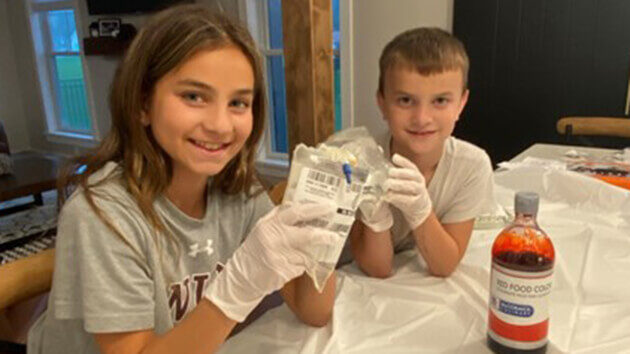Creative Solution Helps Enhance Staff Training

A general rule of thumb to reduce stress is to leave your work at the office when you go home.
For Lindsay Gennari, MD, director of obstetric anesthesiology at Albany Med, the decision to bring a part of her work home was a chance to do something fun with her children.
Dr. Gennari recently saw the need to develop a postpartum training and simulation for nurses. Specifically, she was focused on the risk of postpartum hemorrhaging, which, if left untreated, can be dangerous or even deadly for a patient.
“We wanted to make this simulation as realistic as possible,” Dr. Gennari says. “We wanted to ensure that nurses were ready to respond if and when this type of emergency occurs.”
To do so, Dr. Gennari and the team at the center would need to make sure they had all the necessary props and equipment. She enlisted the help of the team at the Patient Safety and Clinical Competency Center at Albany Medical College and began to develop a simulation scenario.
“When we initially met, it quickly became clear that we needed to make this simulation happen to promote patient safety,” said Heather Frenz, executive director of the Patient Safety and Clinical Competency Center.
One element those leading the training would need was blood and plasma packs that looked realistic. To create the packs, Dr. Gennari came up with the idea of getting her kids involved.
“I thought, I’m going to take this home,” Dr. Gennari said. “My kids love doing arts and crafts, and they love hearing about work.”
Her children, Briella, 10, and Brennan, 8, helped add food coloring to bags of saline that were later labeled and used in the simulations. The blood and plasma packs turned out to be the perfect replica of what a nurse might see in this type of emergency.
Since her children haven’t had a chance to come to work with their mom during the pandemic, Dr. Gennari says her children were eager to pitch in.
“My kids were super excited and loved helping,” Dr. Gennari says.
The blood and plasma packs aren’t just for one-time use – Dr. Gennari says they can be saved and reused for this and other types of simulations in the future.